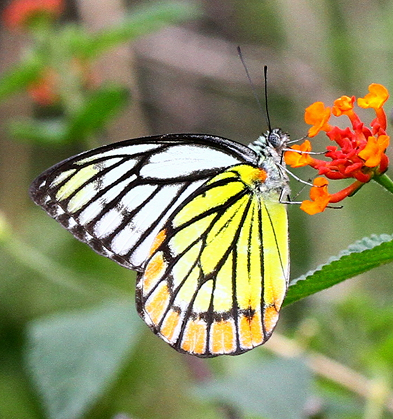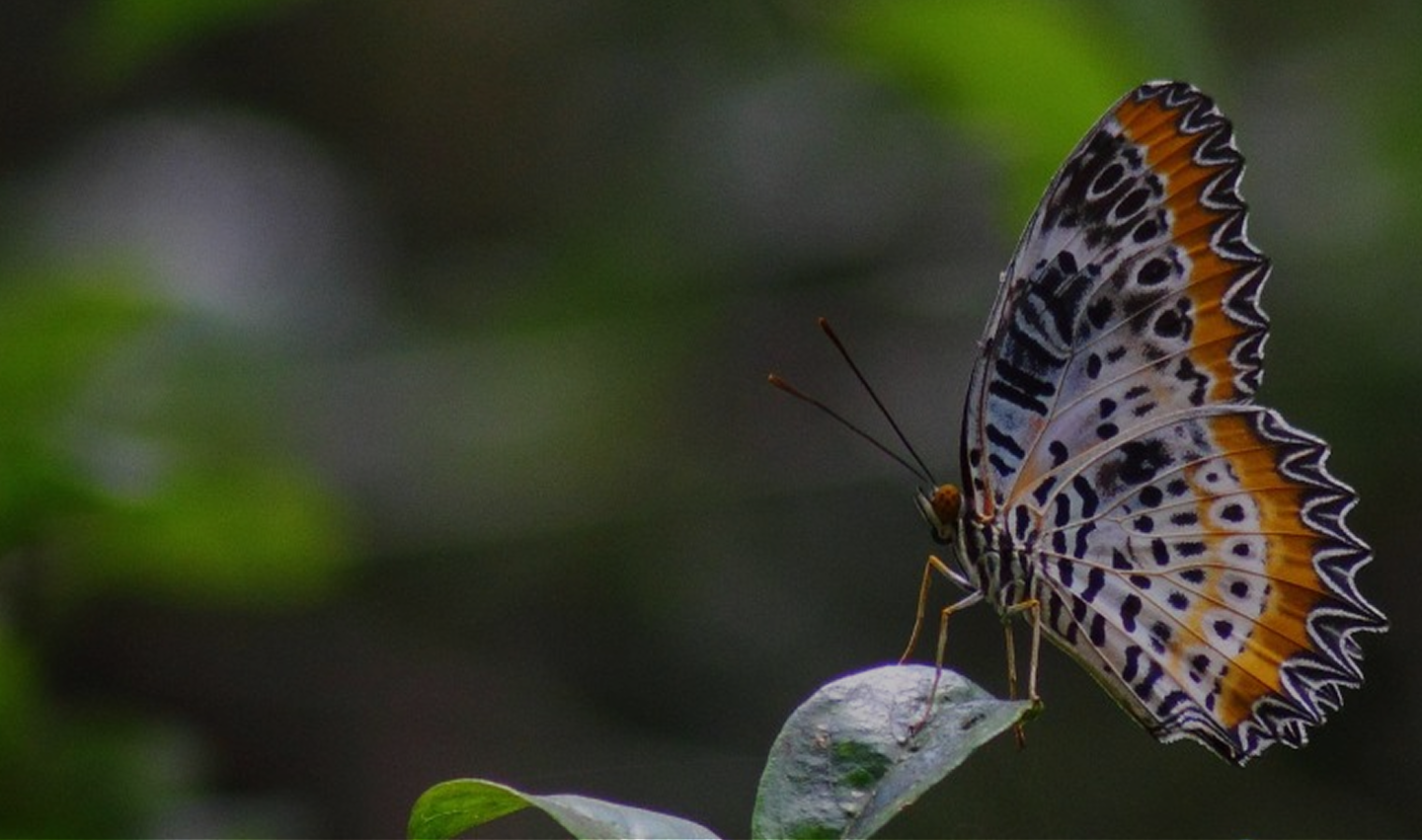
Butterflies of
Sri Lanka
Step into a world of color and grace in Sri Lanka — where over 240 butterfly species flutter through lush rainforests, misty hills, and sunlit gardens. From dazzling endemics to rare migratory wonders, the island is a haven for butterfly lovers and nature seekers drawn to delicate beauty and biodiversity.
Wings, Wind & Wild Blooms
Sri Lanka is a paradise for butterfly enthusiasts, with over 240 species fluttering across its lush landscapes, including many rare and endemic varieties. From vibrant swallowtails to delicate blues and yellows, these colorful insects can be found in forests, gardens, and highland meadows throughout the island. With its rich biodiversity and tropical climate, Sri Lanka offers ideal conditions for butterfly watching and photography, making it one of the best destinations in Asia to explore and enjoy the beauty of butterflies in their natural habitats.
Common Banded Peacock
Papilio crino
The butterfly is solitary and it flies in and out of scrub jungles and in wide open spaces, it flies fast and high, and out of reach. It is a nectar lover and prefers the flowers of tall shrubs and small trees but seen flying high above and forages on the trees. It spends little time on a flower and flies away in a hurry. The male is occasionally attracted to wet soil or gravel.
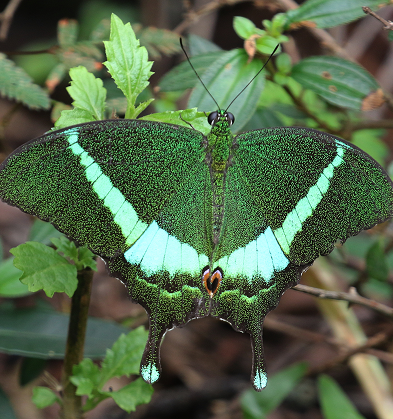
Sri Lankan Tree Nymph
Idea iasonia
Much of its time is spent hovering or sailing high up in the canopy in a slow motion flight. Although frequently seen very high in the trees, it may be observed at or near ground level during courtship or during its visits to flowers. An endemic butterfly.
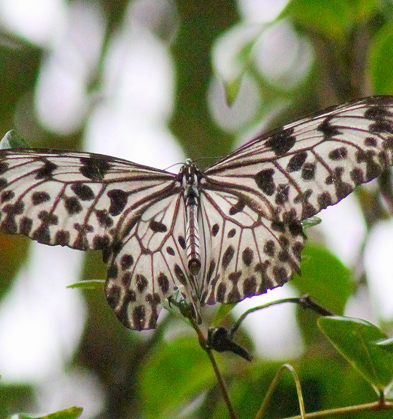
Common Pierrot
Castalius rosimon
It flies relatively fast and low to the ground, and the males frequently settle on roads and gravel patches. It takes nectar from flowers frequently with a choice of wide range of plants with small flowers. When settled once, it moves about a great deal in a slow deliberate manner.
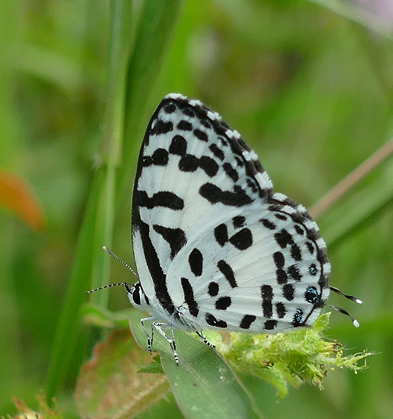
Common Leopard
Phalanta phalantha
A relatively small but striking butterfly, easily recognized by its vibrant, rich orange coloration. Its wings are beautifully adorned with an intricate pattern of black spots and delicate streaks, giving it a lively and almost ornamental appearance. This bold patterning not only enhances its beauty but also helps it blend into the sun-dappled forest floors and dry scrublands where it is commonly found. Agile and energetic, the Common Leopard is a delight to observe as it flits rapidly through its habitat, pausing occasionally to bask in patches of warm sunlight.
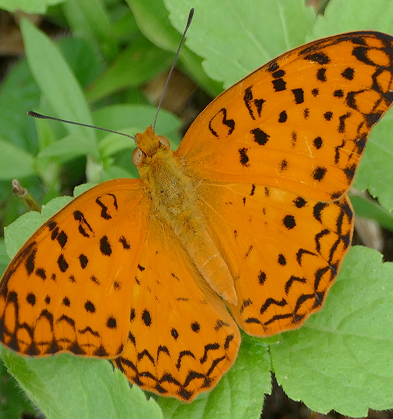
Common Jezebel
Delias eucharis
A medium-sized butterfly belonging to the family Pieridae, and it is widely distributed across many regions of Sri Lanka. Known for its striking appearance, it is one of the most recognizable and abundant species within the genus Delias. With its bold contrast of white, black, red, and yellow on its wings, the Common Jezebel is a familiar and colorful presence in gardens, forests, and urban areas alike. Its bright coloration serves as a warning to predators, signaling its unpalatability, a trait it acquires from the toxic plants it feeds on during its larval stage.
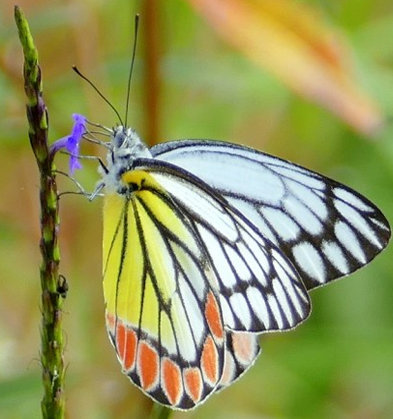
Lace Wing
Cethosia nietneri
A butterfly known for its distinctive flight style, which varies depending on its altitude. When flying low to the ground, it has a slow and labored flight, often flapping its wings with deliberate effort. However, when it ascends to greater heights, its flight takes on a more regal, graceful quality, as it glides through the air with an almost majestic float.
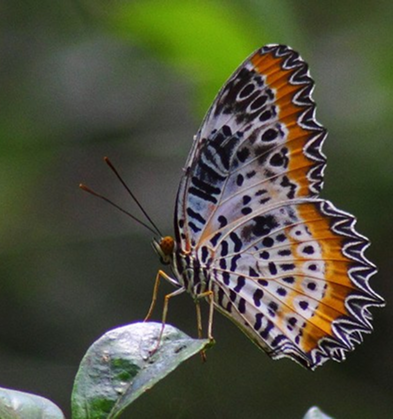
Slate Flash
Rapala manea
A fairly common and widespread butterfly species, found throughout Sri Lanka. It is especially abundant at moderate elevations, where it frequents gardens, forest edges, and lightly wooded areas. This small yet striking lycaenid is easily recognized by its sleek, slate-colored wings and the subtle flashes of metallic hues that catch the light during flight.
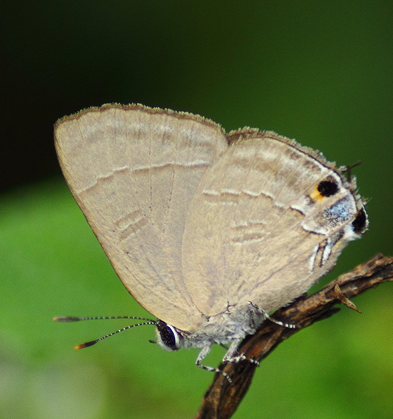
Golden Angel
Caprona ransonnettii
A distinctive butterfly species known for its bold, angular wing shape and swift, darting flight. A notable variation occurs during the dry season, when individuals exhibit a form described as A. taylorii by de Nicéville. In this seasonal morph, the butterfly’s upper side shifts from the typical dark brown to a lighter ochreous hue, giving it a more muted and sun-bleached appearance. Additionally, the discal area of the hindwing becomes relatively plain, lacking the usual group of ochreous spots and streaks seen in the wet-season form.
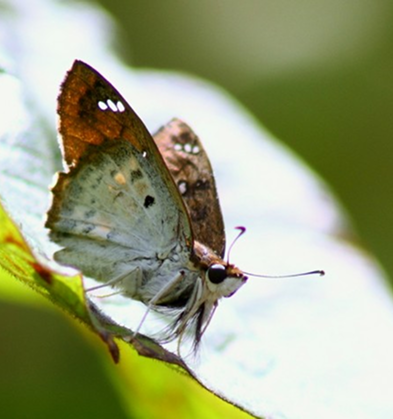
Monkey Puzzle
Rathinda amor
A charming little butterfly typically found in jungle regions that receive moderate to heavy rainfall. It thrives in dense forests and thick scrubland, where the environment provides ample cover and food sources. Although it favors the shelter of the undergrowth, it is often seen flitting along forest paths, trails, and clearings where patches of sunlight break through the canopy.

Great Eggfly
Hypolimnas bolina
A striking butterfly, well-known for its bold appearance and distinctive wing patterns. Despite its relatively large size and the seemingly calm, deliberate way it hovers over flowers while feeding, this butterfly is far from sluggish. It is particularly active during rainy weather, often seen darting between blossoms in search of nectar. While it may appear docile and unhurried during these moments, especially when settled on flowers, it reacts swiftly when disturbed, beating a rapid retreat into the surrounding vegetation.
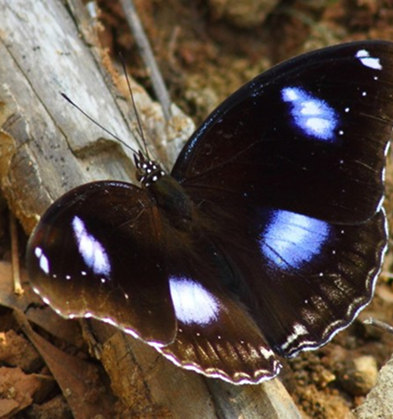
Purple Leaf Blue
Amblypodia anita
A beautiful and subtly striking butterfly, easily recognized by the rich coloration of its wings. The upper side is a deep, dark purple, elegantly bordered by a distinct black marginal band that accentuates its sleek appearance. In contrast, the underside of the wings displays a dark coppery brown tone, providing excellent camouflage against dried leaves and tree bark when the butterfly is at rest.
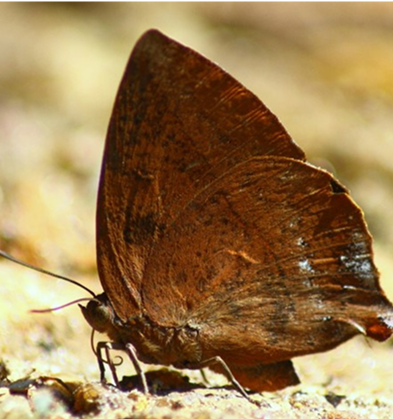
Sri Lankan Birdwing
Troides darsius
An endemic species, holds the honor of being both the national butterfly and the largest butterfly found in Sri Lanka. The male is a powerful and graceful flier, often seen gliding swiftly at considerable heights above the ground. However, it frequently descends to visit flowering plants, where it hovers and feeds on nectar with characteristic elegance. The female, larger and less swift in flight compared to the male, tends to stay even higher in the canopy, making her a more elusive sight.
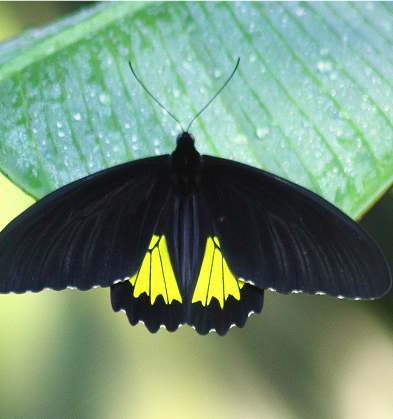
Small Salmon Arab
Colotis amata
A butterfly species that thrives in the hottest and driest regions of Sri Lanka, particularly in the two arid zones along the southeastern and northwestern coasts. This species is most commonly found in the lowland areas, where the climate is harsh and the environment is characterized by sparse vegetation and intense heat.
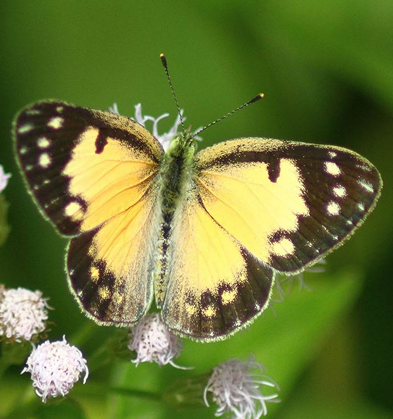
Common Palmfly
Elymnias hypermnestra
A striking butterfly known not only for its beautiful, understated markings but also for its distinctive and somewhat bold behavior. One of its most notable habits is its inquisitive nature. This butterfly is frequently seen hovering around its territory, often intercepting other butterflies that dare to enter its space. It doesn’t hesitate to chase off intruders, a behavior that can sometimes seem rather annoying to its fellow species.
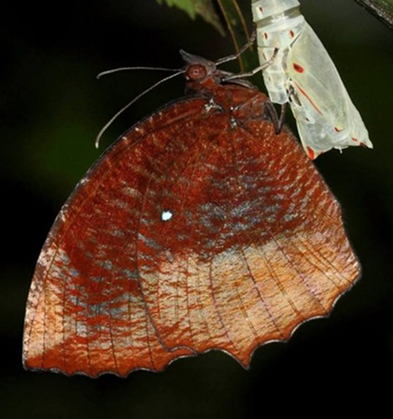
Commander
Moduza procris
A somewhat elusive butterfly that is not easily spotted in the wild unless specifically attracted to bait, which it seems to have a particular fondness for. It is most commonly found resting on the ground, where it exhibits a distinctive behavior of gently flapping its wings, often while blending seamlessly with the surrounding leaf litter.
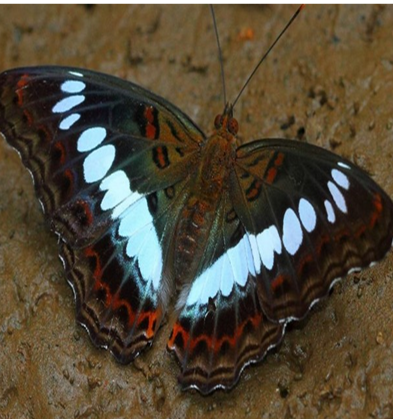
Common Tiger
Papilio crino
One of the most familiar and widely seen butterflies in Sri Lanka. As a member of the “Crows and Tigers,” it belongs to the Danainae subfamily within the Brush-footed butterflies (Nymphalidae). Known for its striking orange and black patterned wings, the Common Tiger is a frequent sight in both rural and urban landscapes, where it flits gracefully through gardens, fields, and forests. Its strong, agile flight and distinctive coloration make it easily recognizable.
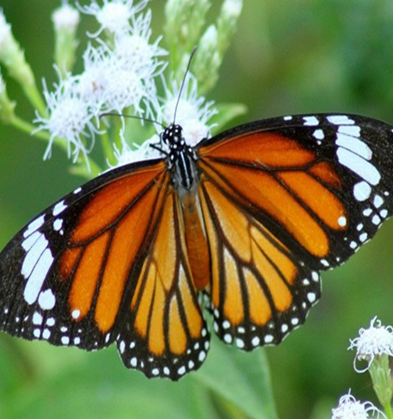
Angled Castor
Ariadne ariadne
A striking species of nymphalid butterfly found in Sri Lanka, renowned for its unique and angular wing patterns. The butterfly’s wings display a combination of earthy browns and rich oranges, with distinctive white markings that form sharp, angular shapes—hence the name “Angled Castor.” These markings, along with the butterfly’s characteristic flight patterns, make it easily recognizable in its natural habitat.
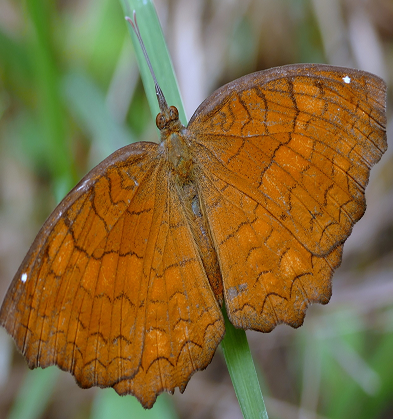
Grizzled Skipper
Spialia galba
A swift and agile hesperiid butterfly, commonly found across Southeast Asia, including throughout Sri Lanka. Known for its rapid, darting flight, this butterfly is often observed zipping through open spaces, particularly in areas with abundant sunlight. The Grizzled Skipper has a preference for flying among herbaceous plants, where it can be seen flitting quickly between patches of vegetation, always on the move.
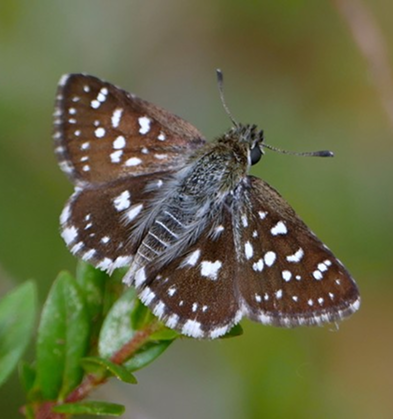
Blue Mormon
Papilio polymnestor
The second-largest butterfly in Sri Lanka, a truly magnificent species that commands attention with its size and vibrant colors. The male Blue Mormon is particularly striking, with bright, iridescent blue hues on the upper side of its wings, a shade that is more vivid than the female’s somewhat subdued coloration. One of the butterfly’s favorite nectar sources is the Clerodendrum flower, where it can often be seen feeding, its striking colors standing out against the lush greenery.
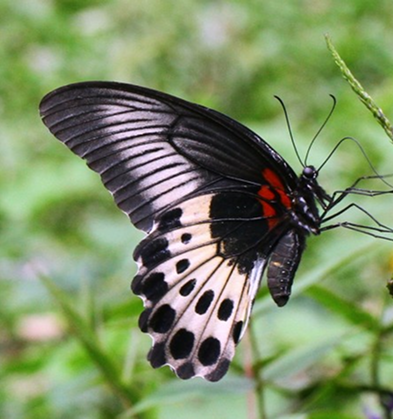
Common Sailor
Neptis hylas
The more widespread and commonly encountered of the two Neptis species found in Sri Lanka. Easily identifiable by its distinctive wing patterns, the Common Sailor is characterized by three distinct parallel bands on the upper side of its wings, a feature that helps differentiate it from the similar Neptis jumbah. These bands are typically white or light-colored, contrasting sharply against the dark background of the wings, giving the butterfly a striking appearance.
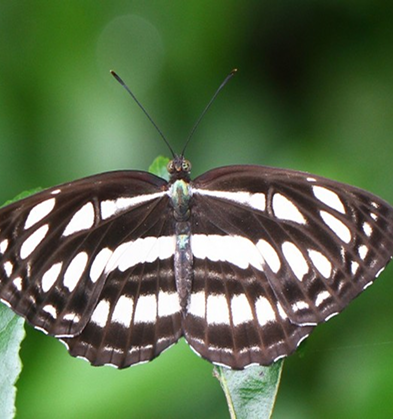
Sri Lankan Hedge Hopper
Baracus vittatus
An endemic butterfly found primarily in the hill country, though it can also be observed in certain lowland areas. Belonging to the Hesperiidae family, this butterfly is a member of the skipper group, known for its quick and darting flight. The wings of the Sri Lankan Hedge Hopper feature a yellowish-brown background on the underside, which is complemented by a pale yellow line running along the hindwing, making it easily distinguishable from other species in its family.
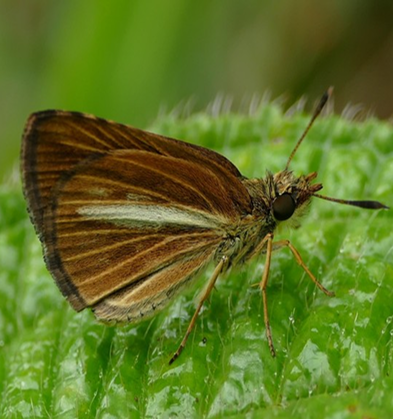
Sri Lankan Lesser Albatross
Appias galena
An endemic butterfly belonging to the Pieridae family, native to Sri Lanka. This butterfly is particularly distinguished by the concave outer margin of its forewings, a feature that sets it apart from similar species, such as the Common Albatross. Additionally, the anal angle of the forewing is more curved, lending the butterfly a unique shape.
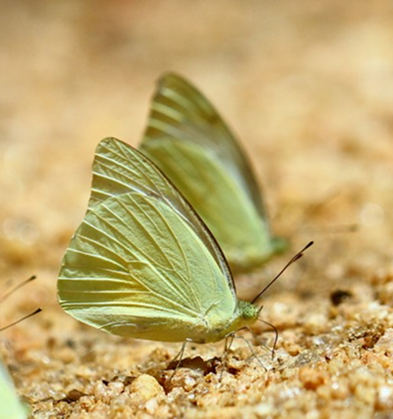
Indian Sunbeam
Curetis thetis
A striking butterfly known for its distinctive colorations and subtle markings. The underside of its wings is snow white, often with occasional obscure markings that add a layer of subtle beauty. The male of the species is particularly eye-catching, with its shiny orange-red upper wings that shimmer in the sunlight, creating a vivid contrast to its pale underside
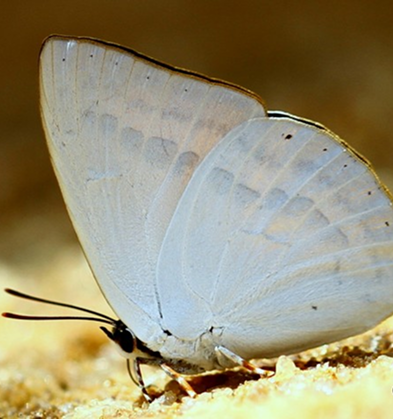
Pea Blue
Lampides boeticus
A small yet widespread butterfly found throughout Sri Lanka, inhabiting open areas across all elevations. This butterfly is particularly common in regions with overgrown vegetation, where its delicate blue wings blend in with the surrounding flora. It is a year-round resident of the island, regularly seen in gardens, grassy fields, and along forest edges, where it flits gracefully from plant to plant in search of nectar.
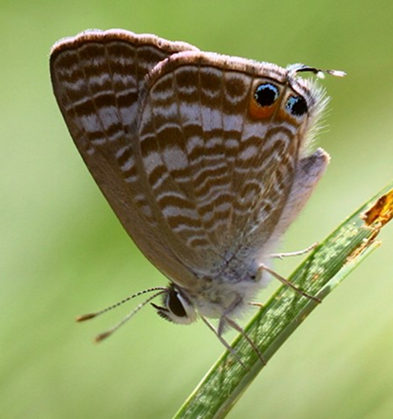
Common Cerulean
Jamides celeno
A small but striking butterfly commonly found throughout Sri Lanka. One of its most distinctive features is the submarginal rows of streaks that adorn both wings, adding a delicate pattern to its otherwise simple appearance. The forewings are characterized by paired lines that are almost straight and continuous, giving the butterfly a sharp, defined look.
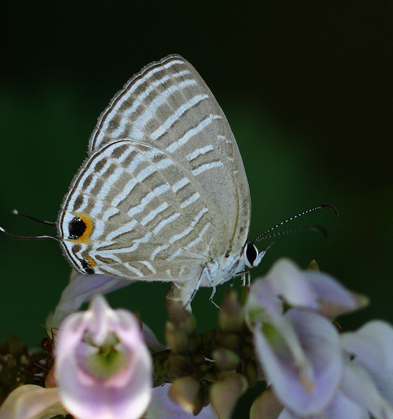
Common Silverline
Spindasis vulcanus Fabricius
Easily distinguishable from other similar species, primarily due to its small size, making it the tiniest among them. Despite its diminutive stature, the butterfly possesses distinct features that set it apart. On the underside of the hindwings, a notable characteristic is the central band, which is more widely spaced from the outer band compared to other species, giving it a unique and recognizable pattern.
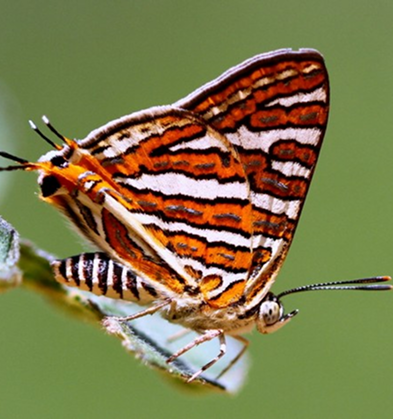
Chocolate Soldier
Junonia iphita
A common butterfly found throughout Sri Lanka. This species is easily recognizable by its rich, chocolate-brown wings adorned with eye-catching patterns and markings. Known for its territorial nature, individuals of this species tend to defend a specific area, often remaining close to ground level. They are frequently seen basking in the sun, where their wings are spread wide, absorbing warmth to maintain their energy levels.
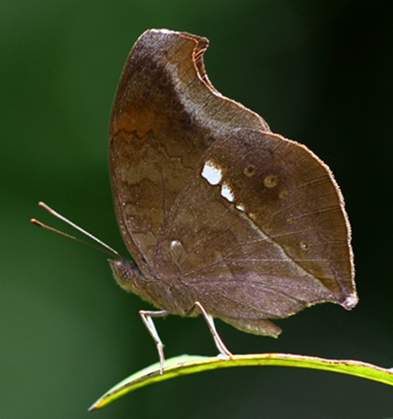
Sri Lankan One-Spot Grass Yellow
Eurema ormistoni
A strikingly bright yellow butterfly that is endemic to Sri Lanka. Its vivid yellow coloration makes it easily recognizable, though it features minimal markings on the underside of its wings, which are mostly a pale, subtle shade. This butterfly distinguishes itself from other species in the Grass Yellow group by the unique curved tornus of the forewing, giving it a rounder and more compact appearance compared to its relatives.
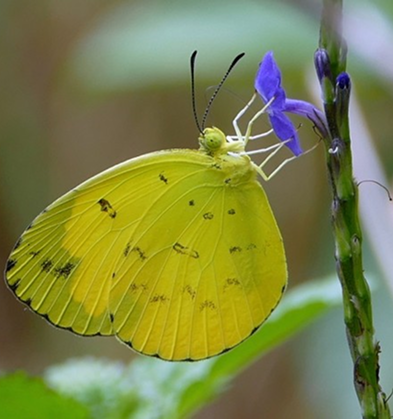
Common Castor
Ariadne merione
A fascinating butterfly that is typically found in close proximity to its host plants, where it spends the majority of its time. This butterfly has a strong attachment to the plants it depends on, often remaining near them throughout its life cycle. It is commonly seen perched on leaves or twigs, waiting quietly. When disturbed, the Common Castor displays an interesting behavior—rather than fleeing far away, it typically circles the area before returning to its original perch.
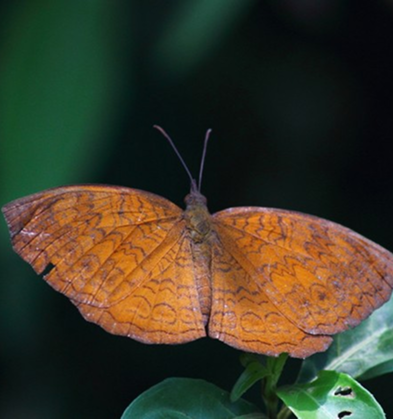
Angled Pierrot
Caleta decidia
A small, delicate butterfly that shows a strong preference for jungles and other wooded areas, where it finds shelter and suitable feeding spots. Unlike many other species, it is not an enthusiastic mud-puddler and is seldom observed in wide open spaces. Instead, it tends to stay closer to the ground, fluttering with quick, low flights through shaded paths and undergrowth.
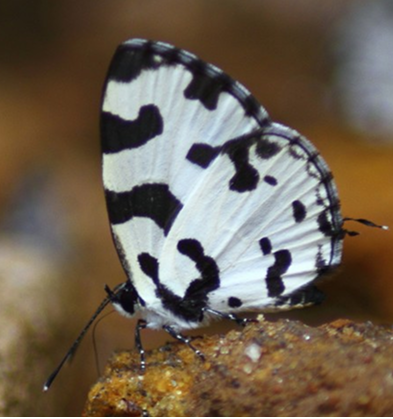
Grass Jewel
Freyeria putli
Holds the distinction of being the smallest butterfly species in Sri Lanka, making it a delicate and fascinating sight to behold. Despite its small size, it has an intriguing and subtle beauty. On the upper side, the butterfly is a purplish-brown color, with a soft, almost iridescent sheen. Its wings are adorned with faint, indistinct tornal spots, which, although not overly prominent, contribute to its unique appearance.
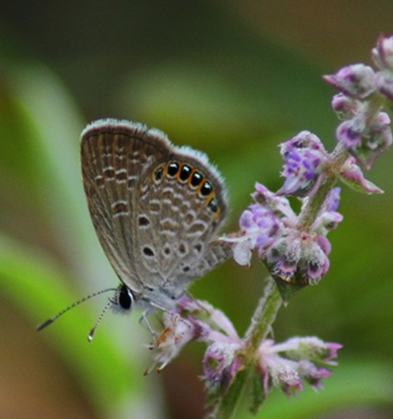
Gladeye Bushbrown
Mycalesis patnia
A distinctive butterfly easily recognized by the large, prominent “eye spot” on the underside of its forewing. This eye spot is surrounded by a pale yellow outer ring, making it a standout feature among other bushbrown species. Typically, the butterfly’s wings are a muted brown, which helps it blend seamlessly with the forest floor or undergrowth.
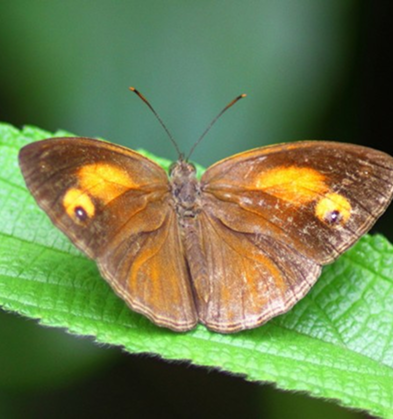
Metallic Cerulean
Jamides alecto
A small yet striking butterfly, known not only for its beauty but also for its reputation as a cardamom pest. This butterfly can often be found in plantations and gardens where cardamom is cultivated, as its larvae feed on the plants. When encountered in the wild, the Metallic Cerulean is typically seen in groups, often flying in the company of others of its kind, creating a delicate spectacle as they flit from one spot to another.
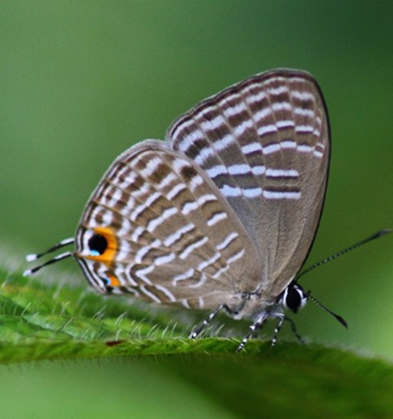
Great Crow or King Crow
Euploea phaenareta
A robust and striking butterfly characterized by its dark brown wings and distinctly larger size compared to other species in the Euploea genus. The wings feature subtle yet distinctive markings, with the submarginal spots on the hindwings being notably smaller than those found on other Crow species. This gives it a somewhat more understated appearance, despite its size.
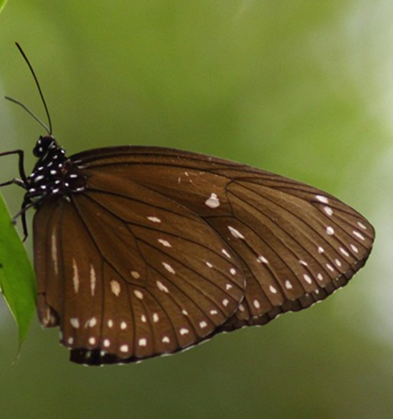
Common Banded Demon
Notocrypta paralysos
A striking butterfly, notable for its distinct banding patterns on both the upper and underside of its wings. On the underside of the forewings, a prominent median band extends all the way to the upper margin, creating a continuous, bold stripe that contrasts against the rest of the wing. In contrast, on the upper side, the same band appears but stops halfway along the upper margin, giving it a more incomplete and segmented appearance.
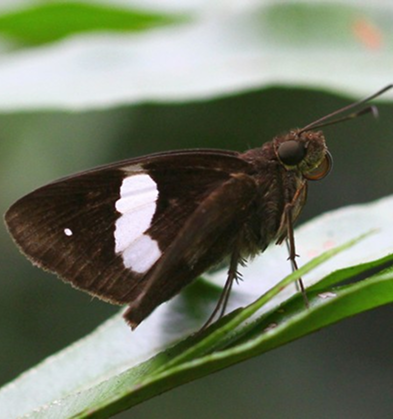
Painted Sawtooth
Prioneris sita
A striking butterfly that bears a close resemblance to the Common Jezebel, yet it can be distinguished by a few key features. The orange patches along the outer margin of the hindwings are rectangular in shape, which sets it apart from similar species with more irregular or crescent-shaped markings. Additionally, the patches at the apex of the forewings are sometimes yellow, adding another layer of distinction.
